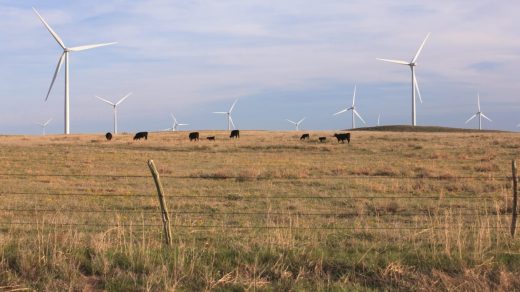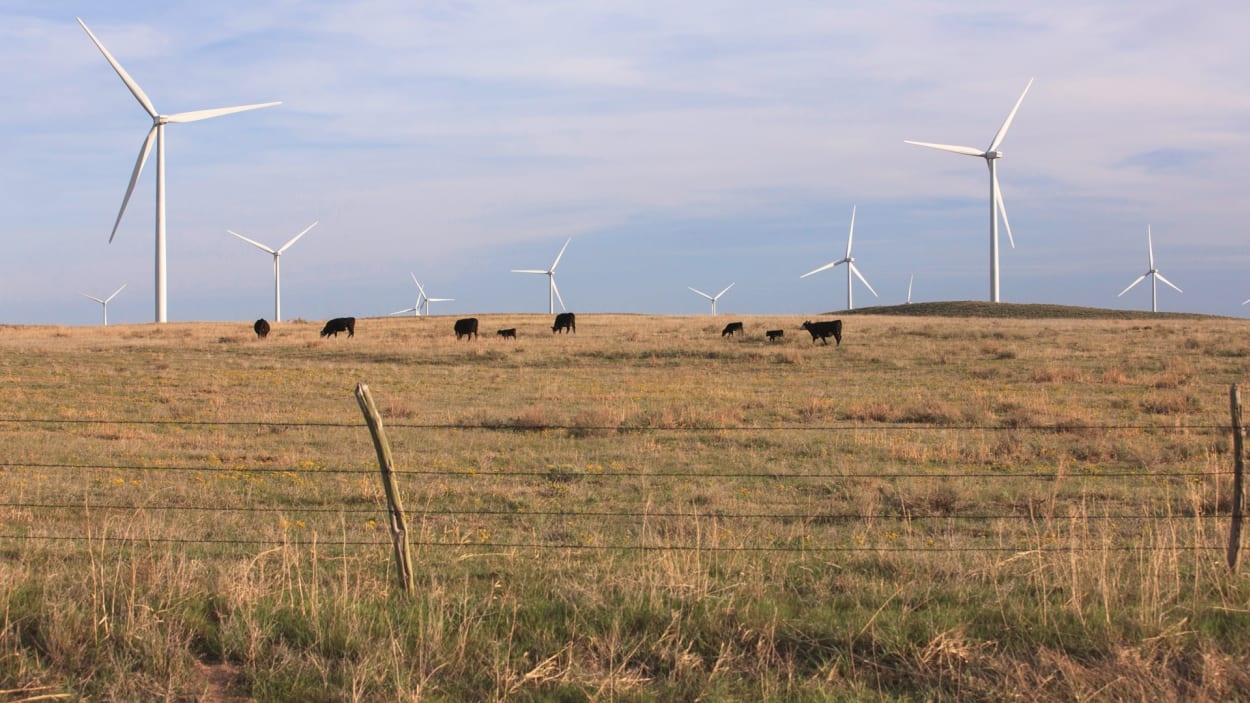How wind farms are supercharging the economies of rural America
By Tim Henderson—Stateline
A wind power boom in the nation’s central corridor has been a financial windfall for some struggling rural areas.
Coke County, Texas, which has a population of about 3,300, had the biggest increase in economic output of any county in the country between 2019 and 2021, according to a Stateline analysis of Bureau of Economic Analysis statistics. Coke County’s gross domestic product, or GDP, increased from $128 million to $235 million, or 83%.
Including Coke County, seven of the top 10 counties with the largest GDP increases had significant recent wind farm construction, the analysis found.
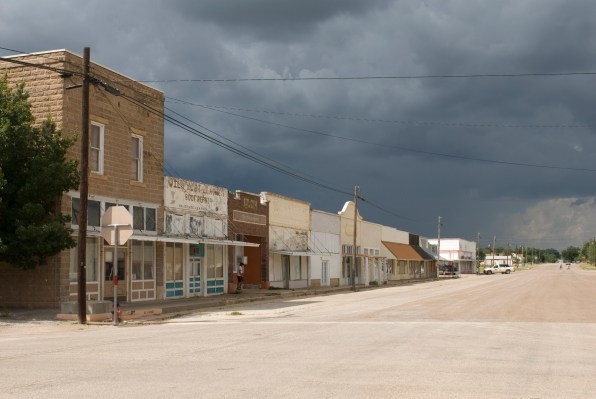
On a per-capita basis, GDP went from about $39,000 to $71,000 for Coke County. Rural counties in Colorado and South Dakota saw similar increases, reflecting a record year for wind turbine construction in 2020. Landowners also get annual royalties for hosting the turbines, typically around $10,000.
“We’re just a poor West Texas county. We don’t get much economic stimulation here,” said Hal Spain, who is county judge, the highest elected official in Coke County. “We’re tickled pink about this.”
Wind farms sometimes generate complaints about their appearance and noise, and some critics object to the subsidies and tax abatements that local officials grant them. Some states have made it easier for local governments to block wind and solar projects, while others allow state regulators to approve sites.
In rural areas such as Coke County, where ranchers’ herds are suffering from drought and oil production is dwindling, wind farms are generating cash to fix roads, recreation centers, senior centers, swimming pools, and other aging infrastructure, Spain said.
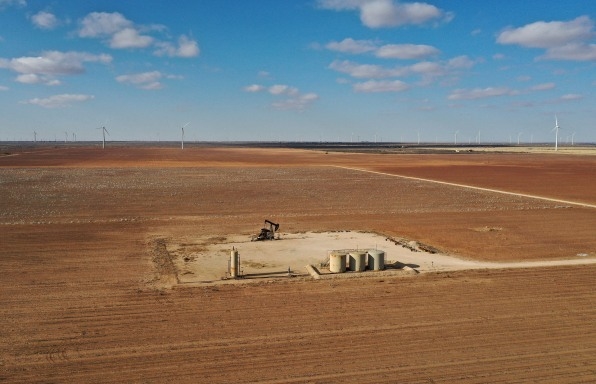
That’s how Coke County is planning to spend the $787,500 annual payment it will get from the Aviator Wind Farm for the next 10 years, a negotiated payment during which the wind farm will pay no property taxes on the turbines. Aviator, which has 191 turbines, started operating in 2020 with Facebook (now Meta) and McDonald’s agreeing to purchase its electricity.
That might be less than property taxes would have brought in, but the reality is “if you don’t give them the [tax] abatement, they’ll just move on to the next county,” Spain said.
Coke County’s expenditures are typical of how counties are using their payments, said Eric Brunner, an economics professor at the University of Connecticut who studies the economic impacts of wind farms on local governments.
“The incentive is to use it for one-time capital costs,” Brunner said. “It doesn’t work well for buying books, recurring things.” Texas is especially generous to wind farm operators because it allows them to put their full value on the property rolls, making it easier to borrow money, even as it allows them to defer paying taxes on that value, he said.
Benefits to local areas from wind and solar power could generate $60 billion in annual revenue by 2030, according to a 2021 report by the Colorado-based Rocky Mountain Institute. Much of that money will flow to rural areas, rivaling the economic impact of the beef, corn, and soy industries. That $60 billion figure includes $2.7 billion in annual tax revenue, $2.2 billion in annual payments to landowners and $6 billion in annual wages for construction and maintenance jobs.
In addition to Coke County, six other counties in the top 10 for GDP growth benefited from significant wind power construction, according to Ben Hoen, a research scientist at Lawrence Berkeley National Laboratory in California. Those counties are Foard County, Texas; Cheyenne County, Colorado; Hyde County, South Dakota; Shoshone County, Idaho; Clark County, South Dakota; and Throckmorton County, Texas.
The economy in Cheyenne County, in eastern Colorado, has picked up thanks to the 228-turbine Cheyenne Ridge wind farm, giving the county a 77% increase in GDP between 2019 and 2021, the third highest jump in the nation. For the first time in recent memory, a new store has opened, and new homes are selling as fast as they’re built, said Jennifer Wells, the county’s economic development director.
Turbines built in 2022 are not included in the GDP figures, but many of those also are in rural areas that should see economic boosts, including counties in Nebraska, New Mexico, Oklahoma, South Dakota, and Texas, according to federal data on new turbines through late 2022.
Much of the wind farm construction is happening in the areas identified as high-wind from the Dakotas south to Oklahoma and Texas, including Kansas, Nebraska, and neighboring states, as well as concentrations around Iowa and the Great Lakes.
Texas leads all states with 18,315 turbines as of late 2022, according to the federal data on turbines analyzed by Stateline, followed by Iowa (6,205), California (5,981), Oklahoma (5,370), and Kansas (3,962).
Texas has used tax abatement incentives to attract wind farms, including allowing local governments to grant 10-year abatement deals like the one Coke County used.
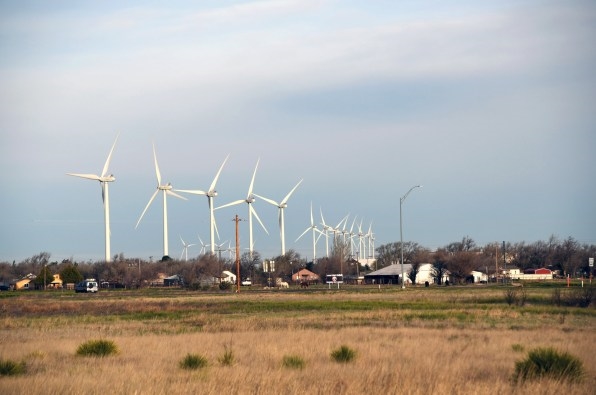
The conservative Texas Public Policy Foundation opposes such tax abatements as “corporate welfare,” arguing that the abatements have allowed wind farms to take over too much of the power capacity in Texas, said Brent Bennett of the foundation, which is partly funded by oil and gas interests. About a quarter of the energy Texas uses is generated by wind.
Some local residents have organized in Texas and around the country to oppose the farms, and have even sued to fight nearby installations they contend are ugly and noisy.
“This has really been dividing people in rural counties. Obviously, there are people that are making money off this and getting royalties, and they are happy about it, but people who have to live in those areas hate it. They’re all fired up,” said Bennett.
Gregg Hubner, a real estate appraiser who owns a farm in Avon, South Dakota, can see 13 turbines from his home. He never would have built the house had he known the turbines were coming to a neighboring area, he said.
“Real estate is about location, location, location, and who would want to live in a place where there’s 13 of these giant things turning all the time? Nobody would want that in a thousand years,” Hubner said.
Oklahoma schools are facing chaos after a recent state court ruling upheld the Kingfisher Wind Farm’s challenge to how counties were calculating its property taxes.
That means a $32 million shortfall for schools statewide as they’re forced to return tax money that was contested, said Andy Evans, finance director of the Oklahoma Public School Resource Center, which advises school boards on the issue.
“The problem is that some of these smaller rural school districts didn’t tax enough to cover their bond payments,” said Evans. Schools will face hard choices: defaulting on payments or finding a way to temporarily shift funds until they can adjust tax rates based on the decision, which schools have asked the courts to reconsider, he said.
“This issue is especially thorny due to its eventual effect on taxpayers and rural communities” who will have to make up the difference, Evans said.
In Coke County, Spain said he’s not sure what to expect when the negotiated payments end. After 10 years, much of the taxable value of the turbines will be depreciated, or written off, he said.
“Are you going to hire somebody and then, what, fire them in 10 years?” he said. “You have to be careful what you spend this money on.”
However, royalty payments to landowners, usually farmers or ranchers, do continue and can help them buy equipment, install irrigation or build homes, said Sarah Mills, senior project manager at the Graham Sustainability Institute at the University of Michigan.
“For communities that want to go all in on agriculture, wind fits well,” Mills said. “For those that want to see a bunch of residential development or have economies based on tourism and the landscape, they may need to look more closely.”
This story originally appeared in Stateline, an initiative of The Pew Charitable Trusts.
(22)

